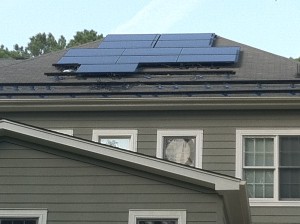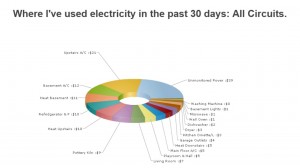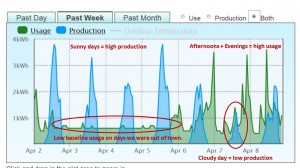There are many reasons for marketers to see opportunity in the Internet of Things, most especially because it entails the interconnection of objects and devices and the data that's generated from these devices. It's not so much that we have to get our geek on, but the devices themselves ultimately connect to individuals that are impacted in some way by the device. Those individuals, of course, are our customers.
The origin of the term, "The Internet of Things," according to Wikipedia, dates back to 1999 and it references the concept as having been discussed "since at least 1991." I believe it's even older than that because well before the 1990s we knew the early concept as the "busy signal" when your best friend's sister hung on the telephone all night and you could not get through ("off hook" was the official Bell System term).
No matter the origin of the term, it has now blossomed into a world-wide phenomenon that now has it's own day - April 9 is Global Internet of Things Day.

To understand the opportunity and its implications, it's worth considering one example - my home. This past summer, my wife and I took the plunge and installed solar panels on the roof or our house. Along with the panels came a monitoring system that reports all sorts of metrics and serves it up to us on demand in an online portal. We can see how much energy our panels are producing, and also which circuits are using what amounts of electricity and at what times.
Since getting our system, we've gotten important information that helps us manage our electricity consumption and make important choices that have enabled us to reduce our carbon footprint and save money. Cases in point include:
- We discovered our 6-arm dining room chandelier with incandescent bulbs used more electricity than our refrigerator and freezer combined. Switching to LED bulbs cut the consumption of that one chandelier by 75%.
- Seeing a spike in energy usage in our second floor HVAC unit pointed to a problem with the unit. A service call confirmed our system's coils were rusted out and had lost 95% of the coolant, so we replaced the unit before it stopped working completely during one of the coldest winters on record.
- Knowing the biggest energy using appliances in the house taught us to use the clothes dryer and pottery kiln at certain times, and to turn our thermostat down and use our fireplace on the coldest evenings.

Mobile technology and the near-ubiquity of Internet access now makes it possible to connect even the most mundane devices and enable users to monitor or manage them remotely. The opportunity for marketers is precisely to enable the users to access that information, as well as potential service providers who can understand the needs of their customers in real-time.

In the case of our solar panels, the company that installed them monitors them remotely and has told us a couple of times when one or another of our panels or power inverters were not performing "up to standard." In both cases, they came out and repaired or replaced the problem devices (free of charge!)
As even the simplest devices have grown in sophistication due to technological advances, the role of those devices in the overall customer experience has grown in kind. Consider any aspect of your business and its operations and think about how devices play a role in your customers' interaction with your organization.
As the Internet of Things becomes more ingrained in all aspects of our lives, it behooves all marketers to understand how that interconnectedness and the big data that results from it is a huge opportunity for us to craft the customer experiences that drive long-term loyalty and generate real value for all involved.
Let me know what you think. As always, thank you for following - and have a nice Global Internet of Things Day!

2 Comments
Thanks for the update on your solar panels. Clearly there is no shortage of hot air in your home.
As much as I love looking at your enery bill, is it possible that someone from respond to my question from last week.
And why are you running your heating and A/C at the same time?
Hi Peter,
I just left a second reply to your comment in the previous blog post (http://blogs.sas.com/content/customeranalytics/2014/04/03/so-marketing-do-you-do-hadoop/) with more details to address your question. SAS EG accessing data in a Hadoop environment happens with SAS/ACCESS Interface to Hadoop. In addition to the resource I suggested on support.sas.com, you can get some additional context for your question in this blog post by my colleague, Mike Ames: http://blogs.sas.com/content/datamanagement/2011/08/29/sas-hadoop-and-big-data/. Beyond that, I'll refer you to your account team for more assistance.
Thanks for the kudos about the hot air in our home! It comes in handy in the winter, but proves challenging in the summer. :) And not to worry about our running heating and A/C at the same time, those two circuits are for two different heat pumps and they happened to be labeled that way on our electrical panel. I'm happy to say that this time of year, we're not actually running either heat or A/C.
Thanks for following!
JB